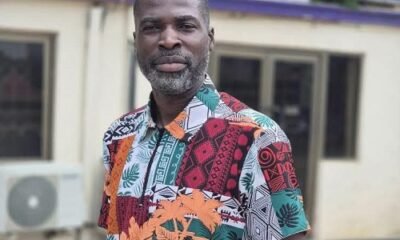Features
COCOA POLYPHENOLS HEALTH EFFECTS – A RECAP
“Are polyphenols the only important constituent of cocoa?” No cocoa contains carbohydrates, fats, proteins, fiber, vitamins, minerals, methylxanthines and polyphenols. This is why cocoa is regarded as a functional food- provides health benefits beyond basic nutrition. Most of the health effects of cocoa-rich chocolate are due to the high content of nutritional polyphenols. In the last thirty years, polyphenols have attracted much interest owing to their antioxidant capacity (free radical scavenging and metal chelating ability) and their beneficial implications in human health, such as in the treatment and prevention of cancer and cardiovascular disease. Hence, cocoa has the health effects generally ascribed to polyphenol consumption.
Cocoa seeds contain many bioactive compounds including high levels of polyphenols (12–18% of dry weight) as well as fatty acids, vitamins, minerals, fiber, and several methylxanthine alkaloids(4% of dry weight), which are psychoactive dopaminergic substances such as caffeine, theobromine, theophylline, phenylethylamine, and paraxanthine.(Massaro et al. “Effect of Cocoa Products and Its Polyphenolic Constituents on Exercise Performance and Exercise-Induced Muscle Damage and Inflammation: A Review of Clinical Trials.” Nutrients 2019, 11, 1471; doi:10.3390/nu11071471). The compounds that show a significant correlation with the cardiometabolic health effects belong to the polyphenol class. Chemical data for dry seeds in the literature give a range of 6-18% of polyphenols, mainly composed of flavanols.
For many years, chocolate was consumed purely for pleasure, but in the last 20 years researches have shown that polyphenol-rich cocoa (dark chocolate with minimum 70% cocoa solids) and natural cocoa powder have beneficial effect on human health due to high content of polyphenols. Polyphenols are large and heterogeneous group of biologically active secondary metabolites in plants, where they act as cell wall support materials, colourful attractants for birds and insects, and defence mechanisms under different environmental stress conditions (wounding, infection, excessive light, or UV irradiation.
The most important food sources of polyphenols are vegetables and fruits, green and black tea, red wine, coffee, cocoa, olives, and some herbs and spices, as well as nuts and algae. But on weight basis cocoa is the richest source of polyphenols. Many researches have shown that polyphenols and/or polyphenol-rich foods have an important role in health preservation due to antioxidant properties. The antioxidant activity of cocoa was shown to be correlated with their polyphenol content.
Polyphenols can act as proton donor-scavenging radicals, inhibitors of enzymes that increase oxidative stress, chelate metals, bind carbohydrates, and proteins. These properties enable them to act as anticarcinogenic, anti-inflammatory, antihepatotoxic, antibacterial, antiviral, and antiallergenic compounds. This is supported by research of Hollenberg et al. who established relationship between high consumption of cocoa beverages and very low blood pressure levels, reduced frequency of myocardial infarction, stroke, diabetes mellitus, and cancer in Kuna Indians residing in archipelago on the Caribbean Coast of Panama. These health benefits were not seen in Kuna Indians residing on Mainland of Panama.
The fat in cocoa in the main is made up of oleic acid, palmitic acid, and stearic acid. Cocoa is also rich in minerals: potassium, phosphorus, copper, iron, zinc, and magnesium.
Polyphenols abundant in cocoa and dark chocolate, activate endothelial nitric oxide (NO) synthase; that leads to generation of NO,, which lowers blood pressure by promoting vasodilation. Indeed, following the consumption of polyphenol-rich, effects include improvement of the pulse wave speed and of the atherosclerotic score index, with parietal relaxation of large arteries and dilation of small and medium-sized peripheral arteries. . Once released, NO also activates the prostacyclin synthesis pathway, which acts as a vasodilator in synergy with NO, thereby contributing to thrombosis protection. Further, the anti-inflammatory and vasoprotective properties of prostacyclin are enhanced by its ability to reduce plasma leukotrienes (inflammatory mediators).
Cocoa plays also a role in treating cerebral conditions, such as stroke; in fact, cocoa intake is associated with increased cerebral blood flow. Polyphenol-rich cocoa has antiplatelet effects and thus of benefit in infarctive stroke treatment or prevention. Thus, daily polyphenol-rich consumption may reduce the likelihood of a stroke attack.
Cocoa and flavonols improve glucose homeostasis by slowing carbohydrate digestion and absorption in the gu. Indeed, cocoa extracts and procyanidins dose-dependently inhibit pancreatic α-amylase, pancreatic lipase, and secreted phospholipase A2. Cocoa and its flavonols improve insulin sensitivity by regulating glucose transport and insulin signaling proteins in insulin-sensitive tissues (liver, adipose tissue, and skeletal muscle).
The observed effects on glucose homeostasis is strongly dependent on the amount of polyphenols. In fact, a single-blind randomized placebo-controlled cross-over study showed, after 4 weeks, showed positive metabolic effects in subjects consuming polyphenol-rich cocoa. Therefore, the daily consumption of small quantities of flavonols from cocoa or chocolate, associated with a dietary intake of flavonoids, would constitute a natural and economic approach to prevent or potentially contribute to the treatment of type 2 diabetes with minimal toxicity and negative side effects.
There is strong interest in the effect of intestinal microbiota on health. Cocoa with its rich fiber content, polyphenol has impacted positively on gut health and in turn on overall metabolic and cardiovascular effects among others.
Studies have shown that cocoa has regulatory properties on the immune cells implicated in both innate (natural) and acquired immunity. Effects worth pursuing and promoting in light of COVID-19.
The polyphenol-rich cocoa acts on the central nervous system (CNS) and neurological functions through the production of NO. Vasodilation and increased cerebral blood flow provide oxygen and glucose to neurons, leading to increased formation of blood vessels in the hippocampus. The polyphenol-dependent antioxidant potential could contribute to the reduction of some neurodegenerative disorders. This inference is based on the fact that age-related cognitive impairment and disorders, such as Alzheimer’s and Parkinson’s diseases, are related to the accumulation of reactive oxygen species in the brain.
The effect of cocoa bioactives on signaling pathways in neurocytes may provide another support for linking it with regulation of brain function. Cocoa flavonols and methylxanthines can activate the cascade pathways of such molecules as rapamycin that play a crucial role in synaptic function, neuronal growth, memory mechanisms, and the pathogenesis of neurodegenerative disorders.
Polyphenol-rich cocoa exerts several effects on human sexuality, mainly acting as an aphrodisiac. Polyphenol-rich cocoa contains three unsaturated N-acylethanolamines, which, acting as cannabinoid mimics, could activate cannabinoid receptors or increase anandamide concentrations. These together with the methylxanthine components produce a transient feeling of well-being.
Until then daily/regularly consume polyphenol-rich cocoa
DR. EDWARD O. AMPORFUL
CHIEF PHARMACIST
COCOA CLINIC
Features
Ghana becoming a developed nation
In a country like ours in which we are aware of our challenges, all that is required is focusing on strengthening our institutional processes by making them more robust and transparent. In this regard, investment in digitilisation must be prioritised since the human element to cut corners is inherent in the psyche of some people and therefore cannot be trusted to do the right things out of their own volition.
Enforcement of existing laws and regulations must be reviewed to see what is working, which ones have to be tweaked to be able to address current challenges, and those that have become obsolete and must be discarded.
One issue that needs to be given priority attention is remuneration. A former President is alleged to declare that we pretend to pay workers and they also pretend to work. This indeed sums up the quandary facing government after government. Workers’ salaries are crucial in the fight against corruption. A realistic living wage must be given to workers; otherwise, they will seek avenues to address their personal budget deficit.
On day one, what should engage the attention of government is Energy, making it available and affordable. The industrialisation agenda cannot be successfully executed without power that is readily available, reliable, and affordable. Solar energy must be factored in the quest for affordable and reliable power for industry.
The fuel sector issues must be urgently addressed so that it can impact positively on the transportation sector, which plays a key role in the supply of goods and services. The railway infrastructure plan linking places like Boankra Inland Port to prolong the lifespan of our roads and to fast track distribution of goods from the Capital City to the inland areas of the country should be a top priority item.
A well-structured system linking industry to academia must be quickly established to serve as a catalyst towards the industrialisation drive. Research findings from the universities must be channelled to captains of industry in a timely manner. Effective channels of communication should be established to facilitate shorter product-to-market times.
An effective mechanism for fishing out needy but talented children must be established, as well as a sponsorship package for talented individuals who are needed for certain critical areas of the economy — what I term critical investment in education.
Certain changes must be made in the constitution, particularly the appointment of the heads of certain constitutional bodies or institutions. This is to ensure that the Executive arm of government does not wield too much power to ensure accountability and checks and balances really work.
The Attorney General’s Office must be detached from the Executive arm of government. The Nolle Prosequi provision must also be amended to compel the Attorney General to give an explanation of why he or she is declining to prosecute a particular case or discontinue it. The provision that protects sitting Presidents from prosecution must also be reviewed.
The punishment for some of our laws needs a review. We must review the removal of CJ provision to ensure the independence of the Judiciary.
Above all, there must be a mindset of change, i.e., a paradigm shift from inability to capability. Inferiority complex must give way to a pacesetters mentality, and all will be well. God bless.
NB: KOTOKA INTERNATIONAL AIRPORT TO KOFI BAAKO INTERNATIONAL AIRPORT
BY LAUD KISSI-MENSAH
Join our WhatsApp Channel now!
https://whatsapp.com/channel/0029VbBElzjInlqHhl1aTU27
Features
The impact of emotional surgery and emotional elysium on neurological and neurosurgical procedures
Abstract
THIS comprehensive review aims to explore the impact of emotional surgery and emotional elysium on neurological and neurosurgical procedures. We examine the scientific literature on these approaches, including their definitions, theoretical frameworks, and applications. Our analysis highlights the potential benefits and risks of these approaches and discusses their implications for practice.
Introduction
Neurological and neurosurgical procedures are complex and delicate, requiring precision and accuracy to achieve optimal outcomes. Emotional surgery and emotional elysium are two innovative approaches that have the potential to enhance the success of these procedures. Emotional surgery involves the use of art and other creative techniques to promote relaxation and reduce stress, while emotional elysium focuses on cultivating positive emotions and promoting emotional well-being.
The Role of Emotional Surgery in Neurological and Neurosurgical Procedures
Emotional surgery has been shown to be effective in reducing anxiety and stress in patients undergoing neurological and neurosurgical procedures. By promoting relaxation and reducing stress, emotional surgery can help patients prepare for procedures, leading to improved outcomes and faster recovery times.
The Role of Emotional Elysium in Neurological and Neurosurgical Procedures
Emotional elysium has been shown to be effective in promoting emotional balance and resilience in patients undergoing neurological and neurosurgical procedures. By cultivating positive emotions and promoting emotional well-being, emotional elysium can help patients cope with the stress and trauma associated with these procedures, leading to improved outcomes and enhanced quality of life.
Benefits of Emotional Surgery and Emotional Elysium
The benefits of emotional surgery and emotional elysium in neurological and neurosurgical procedures are numerous. These approaches can:
- Reduce anxiety and stress: Emotional surgery and emotional elysium can help patients manage anxiety and stress, leading to improved outcomes and faster recovery times.
- Improve emotional regulation: Emotional surgery and emotional elysium can help patients regulate their emotions, leading to improved mental health and well-being.
- Enhance patient experience: Emotional surgery and emotional elysium can improve the patient experience, leading to increased satisfaction and improved outcomes.
Conclusion
In conclusion, emotional surgery and emotional elysium are two innovative approaches that have the potential to enhance the success of neurological and neurosurgical procedures. By reducing anxiety and stress, promoting emotional balance and resilience, and improving patient experience, these approaches can lead to improved outcomes and enhanced quality of life for patients undergoing these procedures.
Recommendations
- Further research is needed: More research is needed to fully understand the benefits and risks of emotional surgery and emotional elysium in neurological and neurosurgical procedures.
- Integration into practice: Emotional surgery and emotional elysium should be considered for integration into practice, as they may offer a valuable tool in the treatment of a range of neurological and neurosurgical conditions.
By exploring innovative approaches like emotional surgery and emotional elysium, we can improve patient outcomes and enhance the quality of life for individuals undergoing neurological and neurosurgical procedures.
BY ROBERT EKOW GRIMMOND-THOMPSON







